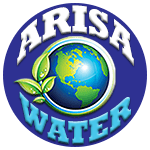Federal officials want to speed up the ongoing cleanup of a plume of Goodyear water contamination in contaminated groundwater to protect scarce water in the Southwest.
Many southwest Valley residents and leaders, who have long pressed for faster action at the decades-old Phoenix Goodyear Airport Superfund site, say they support the U.S. Environmental Protection Agency’s preferred eight-year, $11 million plan, which is now available for public comment.
The new plan chosen by the EPA would remove pollution at the source of the contaminated plume while efforts to clean the entire toxic area continue.
There are two contaminated plumes near the airport, the south and north plume. The EPA plan concerns only the north plume.
It is estimated the source of pollution could be cleaned up in eight years, which would help eliminate the rest of the plume more quickly. The comment period ends Feb. 24.
For about 24 years, there has been an ongoing effort to remove contaminants left by aerospace equipment plant Unidynamics Phoenix Inc., which operated near Phoenix Goodyear Airport from 1963 until 1993. The facility dumped waste materials into dry wells and unlined oxidation ponds.
The state Health Services Department discovered the groundwater contamination in 1981. Stamford, Conn.-based Crane Co. now owns the site and is conducting the cleanup.
Most of the contamination is from a solvent called trichloroethylene, or TCE. Perchlorate, the primary chemical ingredient of rocket propellant, is also present. TCE can cause cancer, and perchlorate can cause thyroid problems.
While southwest Valley communities’ drinking water is safe, officials in Goodyear, Avondale and Litchfield Park have fought for years to contain the plume, which destroyed some wells in Goodyear and threatened those cities’ drinking-water wells.
For too long, cleanup efforts were inadequate, city officials say.
Chemicals seeped from dumping sites into underground aquifers, an important source of water. Over time, the pollution spread throughout some aquifers.
Goodyear approves of the EPA plan because it will speed up the cleanup of the most contaminated part of the plume, and accelerate restoration of the aquifer, said Mark Holmes, Goodyear’s water resource manager.
“This (method) has had great success at other sites that are similar to this contamination site, so the city is very encouraged by the success at the other locations, and we believe it will be very successful,” Holmes said.
The EPA considered seven options, with the preferred plan called Alternative 4.
Solutions would be injected into the groundwater beneath the source of the plume to reduce contaminants, which could dramatically reduce the time needed to bring the plume to drinking-water standards.
Currently, the plume is being cleaned by using wells that extract and treat contaminated water.
The EPA’s recommended treatment has been tested at the north plume.
A 2010 pilot test showed a reduction of 63 percent to 96 percent in the concentration of contaminants one month after the injection, according to data from monitored wells.
Arizona Department of Environmental Quality officials said Friday they have not made a formal determination on the preferred alternative and will not do so until they evaluate the public comments.
A key community group also supports the plan, but at least one member has concerns.
The PGA Area Superfund Site Community Advisory Group, which is made up of residents from Goodyear, Avondale and Litchfield Park, has been an integral part of efforts to hold all involved parties accountable and to ensure the plume does not impact remaining wells.
In a letter to the EPA, the group voiced support for faster cleanup, and asked the agency to take additional steps.They want federal officials to protect an underground barrier that prevents contaminants from entering the cities’ drinking wells and a contingency plan in case the barrier is breached. They also want the byproducts generated by the cleanup and chemicals injected into the source area to be contained and closely monitored, and the public to be kept informed.
“We are pleased to see the progress now being made on remediation and that collaboration is evident among all parties,” they wrote in the letter.
Frank Scott, co-chair of the advisory group and vice mayor of Avondale, said a consultant shared by Avondale and Litchfield Park recommended the cities support Alternative 4.
Still, advisory-board member Diane Krone is concerned about hydraulic fracturing, the method used to inject solutions that would be used to clean up the plume.
“We (the advisory group) talked a lot about the hydraulic barrier that’s part of the plan, and we voiced a concern that it be beefed up so things are not going to migrate off it once you have some high-pressure action going there,” she said.
Holmes said the fracturing won’t be like the traditional “fracking” that uses pressurized liquid to create fractures in rocks. The hydraulic fracturing in Alternative 4 would impact clay, sand and gravel, he said.
The EPA will write a record of decision based on public comments it receives by Feb. 24.
Once the decision is published, Crane Co., the site’s owner, has 60 days to respond with a plan to carry out the project. The company’s plan must be approved by the EPA before work can begin.
To find more articles on this topic click here.

